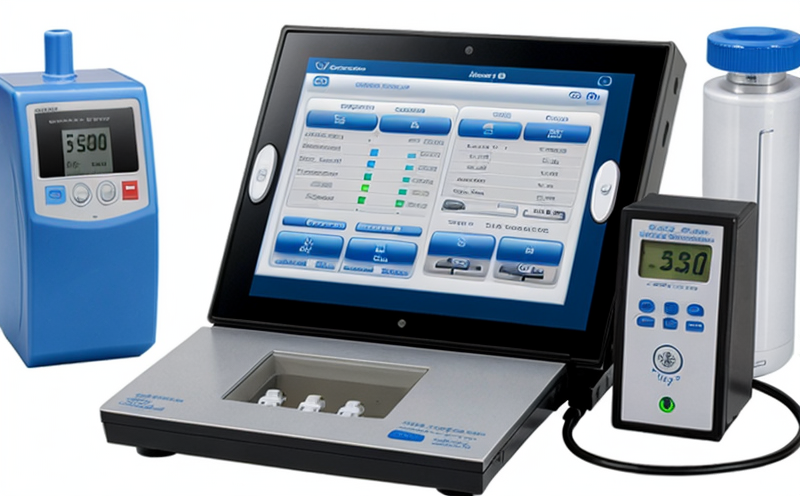Residual EO Testing in Sterilized Infusion Devices
The residual ethylene oxide (EO) testing in sterilized infusion devices is a critical step in ensuring the safety and efficacy of medical devices. Ethylene oxide is commonly used for sterilizing medical devices due to its broad spectrum antimicrobial properties, low cost, and high efficiency. However, incomplete removal of EO can lead to adverse effects on patients, including respiratory issues, skin irritation, and potential carcinogenic risks.
Residual EO testing ensures that the sterilization process is effective and that any trace amounts remaining are well below acceptable limits set by regulatory bodies like the United States Food and Drug Administration (FDA) and the European Union's Medical Device Directive. The FDA, for instance, specifies a maximum of 10 parts per million (ppm) of EO in medical devices intended for patient contact.
During the sterilization process, EO is typically used as a gas to penetrate into all parts of the device, including hard-to-reach areas. After sterilization, rigorous testing must be conducted to verify that the device has been effectively cleaned of residual EO. This testing involves both quantitative and qualitative methods to ensure accuracy.
Quantitative analysis measures the amount of EO remaining in a sample using techniques such as gas chromatography (GC). Qualitative tests check for the presence of EO, which can be particularly useful when dealing with complex sterilization processes or in cases where trace amounts might still pose risks. These methods are crucial because they help manufacturers and regulatory bodies ensure that products meet stringent safety standards.
The importance of residual EO testing cannot be overstated. Incomplete removal not only affects the device's sterility but also poses potential health hazards to patients who use these devices. Regulatory authorities worldwide have strict guidelines to prevent such risks, ensuring public safety remains a top priority in medical device manufacturing processes.
- Guarantees compliance with international standards like ISO 11135-2
- Maintains the integrity of sterilized infusion pumps and drug delivery systems
- Ensures patient safety by minimizing exposure to hazardous substances
- Aids in maintaining quality control throughout manufacturing processes
- Facilitates smoother market entry through regulatory approval
In summary, residual EO testing is an essential component of the sterilization process for infusion devices. It ensures that these critical medical tools meet stringent safety and efficacy standards while protecting patients from potential health risks.
Scope and Methodology
The scope of residual EO testing in sterilized infusion pumps and drug delivery systems involves a comprehensive evaluation to ensure the complete removal of ethylene oxide after sterilization. This process typically includes several key steps:
- Sample collection: Carefully selected samples from various parts of the device are taken for analysis.
- Preparation: Samples undergo initial preparation, which may include drying or conditioning to standardize testing conditions.
- Analytical techniques: Advanced analytical methods such as gas chromatography (GC) and mass spectrometry (MS) are employed to measure EO levels accurately.
- Data interpretation: Results from these analyses are interpreted by experienced professionals who ensure compliance with relevant standards.
The methodology follows stringent protocols outlined in international standards like ISO 11135-2. These guidelines provide precise instructions on sample collection, preparation, and analysis to maintain consistency across different laboratories.
Quality assurance measures are also implemented throughout the testing process to ensure reliability and accuracy of results. This includes regular calibration of equipment used for EO measurement, standardization of laboratory procedures, and continuous training of personnel involved in testing.
The goal is to achieve a thorough understanding of each step’s impact on residual EO levels within sterilized infusion devices. By adhering strictly to these protocols, we can ensure that our tests are reliable indicators of the effectiveness of the sterilization process, thereby enhancing patient safety and trust in medical technology.
Industry Applications
The need for residual EO testing extends beyond just ensuring compliance with regulatory requirements. It plays a vital role in multiple aspects of the medical device industry:
- R&D Innovations: Residual EO testing helps researchers identify optimal sterilization methods that minimize EO residues without compromising efficacy.
- Manufacturing Quality Control: Continuous monitoring through residual EO tests ensures consistent quality throughout production lines, reducing variability and defects.
- Supply Chain Management: By verifying EO levels in incoming components or finished products, manufacturers can maintain high standards across their supply chains.
- Regulatory Compliance: Ensuring adherence to strict international standards like ISO 11135-2 is crucial for gaining and maintaining market access in regulated markets.
In addition to these benefits within the industry, residual EO testing also supports broader healthcare goals. By reducing patient exposure to potentially harmful substances, it contributes significantly to improving overall health outcomes. Moreover, this practice fosters a culture of excellence and reliability in medical device manufacturing, which is essential for maintaining public trust.





